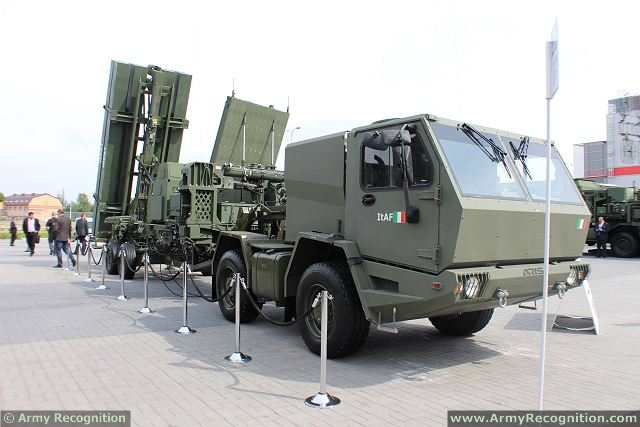|
|
|||
|
Defence & Security Industry News - MEADS International
|
|||
|
|
|||
| U.S. MEADS air defense missile system candidate for army program 2015 in Germany and Poland. | |||
|
The tri-national Medium Extended Air Defense System (MEADS) program enters 2015 as a candidate for next-generation air and missile defense requirements in both Germany and Poland. MEADS is a primary candidate for the German Taktisches Luftverteidigungssystem (TLVS), a new generation of air and missile defense that requires a flexible architecture based on strong networking capabilities. MEADS is also expected to become the basis of a national defense system in Italy. Formal decisions are expected from Germany and Italy early this year, and a follow-on plan is being developed for transition.
|
|||
|
|
|||
|
|
|||
|
In December, the Polish Armament Inspectorate also announced that MEADS International will participate in technical discussions for the Narew short-range air defense system. The Narew system will be capable of destroying aircraft, helicopters, unmanned aerial vehicles and cruise missiles.
“We have built and tested a new generation of networked air and missile defense radars, launchers and battle managers,” said MEADS International executive vice president Volker Weidemann. “MEADS is now ready for continuation programs in Germany and Italy, and for Poland’s Narew program.” In December 2014, the MEADS program completed a formal contract review with evaluators from Germany, Italy and the United States. The review completed a recent series of achievements that began with a successful first-ever dual-intercept test at White Sands Missile Range in 2013. In March 2014, the MEADS Mode 5 Identification Friend or Foe subsystem gained final certification for including Mode 5 (L2) capability. |
|||
|
|
|||
|
|
|||
|
The U.S. Army Aviation and Missile Research, Development and Engineering Command has also held a separate review to respond to interest within the Department of Defense in leveraging MEADS technology. MEADS represents a $4 billion effort to develop, implement and prove next-generation air and missile defense system technology.
“The nations recognize the need for a more versatile capability in air and missile defense,” said NAMEADSMA general manager Gregory Kee. “MEADS is designed to be flexible, agile and lethal against the evolving threats our adversaries are developing.” MEADS is designed to defend up to eight times the coverage area with far fewer system assets with significantly reduced demand for deployed personnel and equipment and for airlift. MEADS is also designed for high reliability and needs fewer personnel to operate. MEADS International, a multinational joint venture headquartered in Orlando, Florida, is the prime contractor for the MEADS system. Major subcontractors and joint venture partners are MBDA in Italy and Germany, and Lockheed Martin in the United States. |
|||
|
|
U.S. MEADS air defense missile system candidate for army program 2015 in Germany and Poland 0801152
- Posted On















